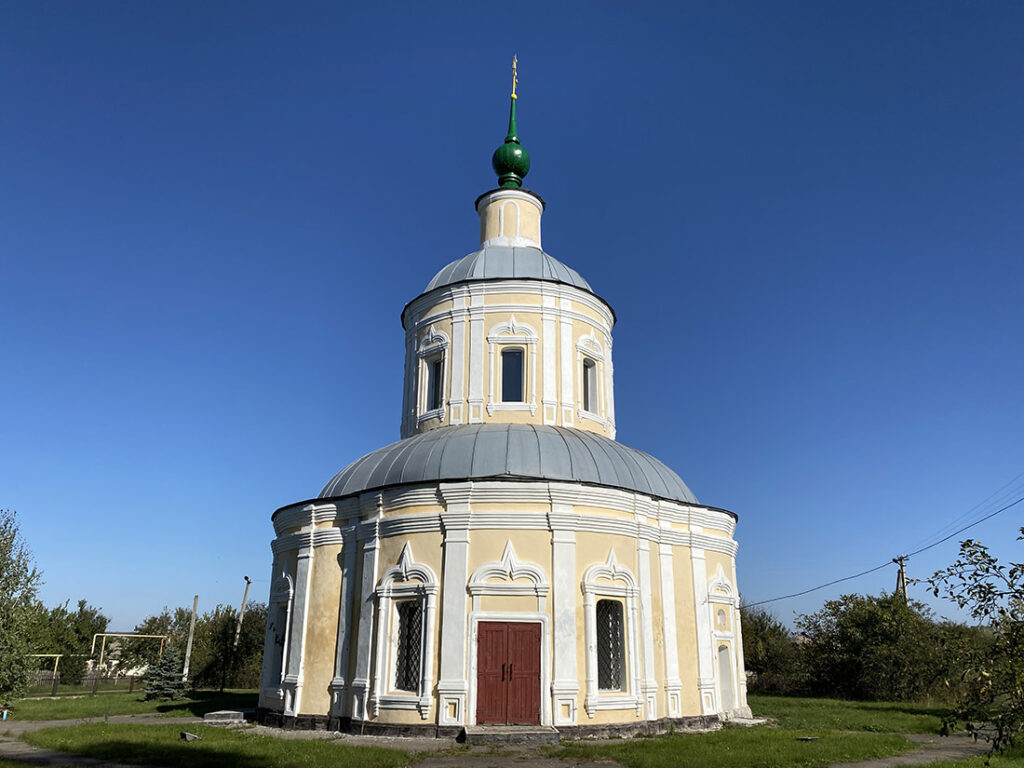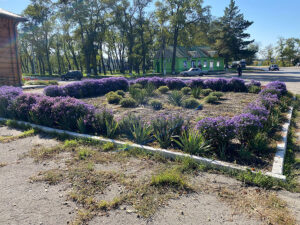What interesting things to see in Dnipropetrovsk region?
Dnepropetrovsk region continues to amaze and discover new wonders. This time I went on a trip to the village Kitaygorod, which is located 77 kilometers from the Dnipro city. At first glance it is a medium-sized village and there is nothing interesting here. But in fact everything is different.
I can call Kitaygorod underrated in terms of the tourist route.
It would seem that the village lies on the road between Tsarychanka and Petrykivka, where tourists often go. However, they almost never come here, except on their own, and only if they know where to go.
Modern Kitay-gorod
Now there are about 2,400 residents in Kitaygorod. This is a relatively large number of people, and therefore I can safely call it a village.
There is a school, house of culture, market, a couple of clothing stores and building materials, kindergarten “Kalinka”, modern paramedic and obstetric center, library, market, memorial to fallen soldiers of World War II, neat park. In the village there are two companies associated with the agricultural sector.
Not far from the village is Mount Kalitva, a natural formation after the retreat of the last glacier and a historical monument.
I liked the fact that the village is well maintained and clean, both in the center and on the outskirts.
Near Kitaygorodom the river Orel flows and there are a couple of beaches where you can relax. The beaches are in a protected area. They are also clean, although you can see that people relax here.
Where did the name Kitaygorod come from?
People lived on the site of the village in the Neolithic era, and the modern village appeared in 1662 or 1667 as a Cossack settlement. It was enclosed with paling and, according to legends, such settlements were called Kitaygorodki (small villages). This is the first version of the origin of the name.
The second version is related to the first and says that when during the Tatar raids signaled the impending invasion – on the palisades hung a red cloth – “kitayka”. Because of the frequent attacks the flag was practically never removed – and so went the name – Kitaygorod.
The third version is that there was a Cossack garrison in the neighboring Tsarychanka, and when the messenger was sent here, they said “katay (ride) to the town”. That’s how the name came about.
Cossack temple complex in Kitaygorod
The main attraction of the village is the Temple complex. It is a national architectural monument of Ukraine. These three churches have been preserved in pristine condition since the mid-18th century. Such architecture of churches can’t be found anywhere else in the East and South of the country.

The village was once ruled by centurion Pavel Yerofeyevich Semenov. He was an economic man and took care of his community. He had to defend the rights of his inhabitants before the higher authorities, as well as to solve everyday disputes with neighbors. For example, about land seizures or cattle theft.
Once the centurion raised the status of his village and his personal, then with his own money and the money of the community built four churches at once.
The first church was wooden. It burned down during the many wars and raids. The other three remained pristine to this day.
It is interesting that few people know about these temples, although they are not far from the highway – you just need to turn off the highway and walk 500 meters.
St. Nicholas Church in Kitaygorod
The 1751 baroque drum-shaped dome was built in the Baroque style. Its proportions are perfectly maintained. The church is decorated with pilasters and the windows are framed with platbands. During the Soviet Union it was used to store spare parts, and that caused the loss of the wall paintings. But they have survived in some places.

The entrance to this church was closed, so I had to take pictures through the glass of what was inside.
This church is the most interesting. It stands apart from the main complex and is the only example of a tetrakonkha temple in Ukraine.
St. Varvara Church in Kitaygorod
It was erected in 1756 as a watchtower. And for some time the church was used for this purpose. Only in 1796 it was no longer necessary, so the church was rebuilt, given the name of St. Barbara and dedicated as a temple.

Now it is being renovated, and the church serves as the bell tower of the temple complex. In the past, it was used to monitor the area and warn of enemy attacks.
Holy Dormition Church, Kitaygorod
The Church of the Holy Dormition is the same age as Varvara’s. It was built according to a unique project and there are no other similar structures in Ukraine. The church was built in Baroque style in 1754.

When churches began to be destroyed after the revolution of 1917, the museum exhibits and building materials for the construction of the school were stored here. In the early 1990s, the museum moved to Tsarychanka, and the street remained “Museum”.
During the restoration period, patrons donated the iconostasis and other accessories, and painting on the vaults and walls was done by an artist from Dnepropetrovsk, who worked here for several years.
In the church there is an image of the Mother of God of Oril, “The Child’s Crying”. It has miraculous properties and is greatly revered by the local parishioners.

Each year the temple complex hosts a festival with performances of church singers, selling handicrafts, icons, Easter eggs, honey, cooking the famous Cossack porridge.
On the territory of the temple complex there is a memorial plate to centurion Pavel Semenov. His body used to rest in the family crypt. But during the revolution the crypt was looted and turned into a warehouse, and then it was completely destroyed. Since 2016, his relics have been resting in the Church of the Dormition.
Ukrainian defense line
Or Ukrainian line. On the outskirts of the village you can find a local landmark. It is part of a huge earthen rampart, which was part of the Ukrainian defensive rampart.
It is because of this shaft that I believe that Chinatown is underrated as a tourist location.
This rampart was built in the 1730s as a defensive structure in the south of the empire against the raids of the Tatars and Turks. Its length is about 400 km. The rampart consisted of an earthen embankment, paling, fortresses inside which people lived. As a matter of fact, that’s how Kitay-gorod appeared.

Now the remains of the rampart can be seen behind the temple complex closer to the river – this is where the construction of the settlement began. The rampart is not as big and formidable, and there is now a garden growing on the territory of the fortress.
How to get to Kitaygorod
There are many flights from Dnipro city to Kitaygorod. This is the Poltava and Tsarichanskoye direction. Buses leave from the bus station every 20-30 minutes.
If you go on your own transport – on the P52.
Google Maps – 48.8980598, 34.3646268.





